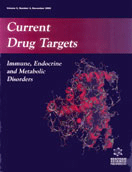Abstract
Latex allergy is an increasingly common condition, because the use of latex products is widespread. Three types of reactions can occur in persons using natural latex rubber products: 1) Irritant contact dermatitis, 2) Allergic contact dermatitis, 3) and Type I hypersensitivity. Childrens subpopulations at particular risk include: atopics, individuals with spina bifida, or individuals who required frequent surgical instrumentations. An association between allergy to latex and allergy to various fruits and vegetables has been reported. Recently, an homology between latex allergens and mold allergens has been reported leading to postulate a possible existence of a “latex-mold-syndrome”. Diagnosis of allergy is based initially on history, skin prick test and search for specific serum IgE. Provocation tests may confirm the suspicion, although these are seldom performed on children because they are not easy to bear with. The most effective strategy to decrease the incidence of NRL (natural rubber latex) sensitization is avoidance; however, this is virtually impossible, given the large number of latex products we encounter since childhood. Studies of secondary prophylaxis among children demonstrate that notwithstanding recommendations, children could manifest yet adverse reactions to latex products and have detectable levels of anti latex IgE..
Keywords: children, diagnosis, latex, prevention, risk factors
 1
1


















